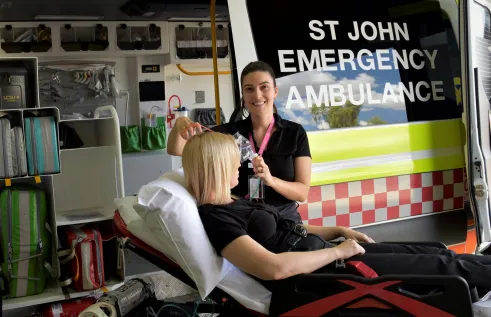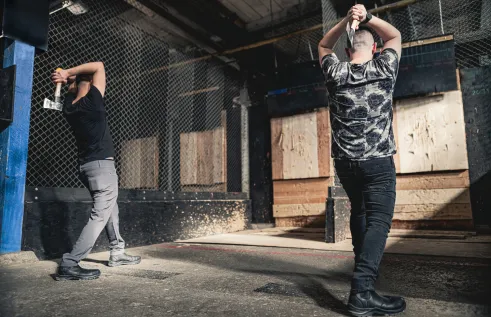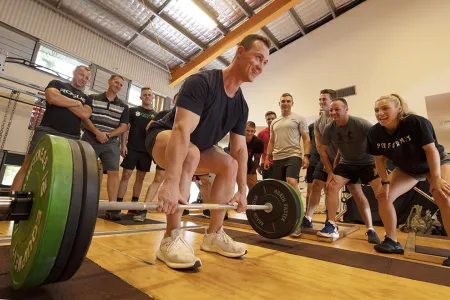News Article
Defence PTIs train at CDU
Staff and students from Charles Darwin University’s College of Health and Human Sciences have delivered professional development for 15 Physical Training Instructors (PTIs) and physiotherapists from the Australian Defence Force.
The PTIs attended a week-long training program, covering the latest in training theory and practice, for the benefit of hundreds of soldiers on Barracks. It also aimed to bridge the gap between experience-based and science-based training methods.
CDU Exercise and Sport Science course coordinator Dr Daniel Gahreman said each PTI was responsible for training up to 800 soldiers throughout the year.
“Defence training presents unique challenges from extreme climates and variations between genders, to the biomechanics of performing in uniform and carrying equipment or dealing with post-traumatic stress disorder,” Dr Gahreman said.
The multidisciplinary team of staff and PhD candidates from the College of Health and Human Sciences delivered the week-long program.
Sergeant Cameron Justice, a PTI from the Top End’s 1st Brigade, who attended the training program, said he was enthusiastic about the new relationship with the College.
“These industry professionals have a wealth of knowledge, information and experience to assist in our continued pursuit of excellence, which ultimately benefits the soldiers on the ground,” Sgt Justice said.
“The CDU team delivered a training package to further develop our high-performance initiative within our work environment, and as a result it has allowed us to look at our current processes from a different angle to meet the ever-changing environment a soldier is required to operate in.”
The PTIs learnt about how the body responds to exercise in varying weather conditions, optimal diet and hydration, recovery practices, managing intense activities, injury prevention, motivation, and resilience under pressure.
“We are using a holistic approach that includes physical, mental and biomechanical aspects of training,” Dr Gahreman said.
“For example, biomechanics will be used to teach soldiers how to optimise performance and minimise the risk of injury while wearing full combat clothing and equipment.”
Dr Gahreman said there was potential for ongoing collaboration to develop pathways to further education, consultancies and research projects.
“Ideally, we would like to offer short courses that could lead into recognition of prior learning for higher education degrees, but at this stage we are focused on delivering great value and establishing our partnership,” he said.
Related Articles

CDU student paramedics tested in a simulated explosion
Charles Darwin University (CDU) paramedic students were put through their paces in a real-life scenario that included the sights and sounds they would expect while responding to emergencies.
Read more about CDU student paramedics tested in a simulated explosion
Award-winning paramedic shines at CDU Open Day
Working at the busy intersection of education, primary healthcare, emergency medical services and public health, Amy McCaffrey is an inspirational figure.
Read more about Award-winning paramedic shines at CDU Open Day
What happens to your body when you throw an axe?
With axe throwing growing and elite competition booming, a Charles Darwin University (CDU) sports scientist is looking at how the three most common throwing techniques impact the body.
Read more about What happens to your body when you throw an axe?
